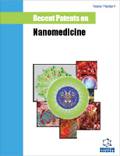Abstract
The use of nanocarriers as drug delivery vehicles for chemotherapeutics improves overall pharmacokinetics and biodistribution of otherwise unencapsulated cytotoxic agents, and can significantly decrease unintended negative sideeffects commonly associated with these types of drugs. While a wide variety of nanocarrier-based chemotherapeutics have been reported, micelles are particularly attractive candidates due to inherent characteristics that make them ideal for drug encapsulation. Therefore, it is not surprising that several formulations are currently in various stages of clinical trials. However, while proving to be quite promising, challenges remain involving effective drug transfer from the nanocarrier to cancer cells. Thus, several groups have reported various strategies involving modifications made to these drug delivery vehicles in order to improve delivery of encapsulated cytotoxic agents to tumor cells. While various methods have been reported to achieve this, here we focus specifically on modifications made involving targeting ligand addition, as well as the incorporation of pH-sensitive molecules to these nanocarriers. Recent patents involving these specific modifications made to traditional micelles are discussed in this review.
Keywords: Micelles, micellar-based chemotherapeutics, cytotoxic agents, drug carriers, nanocarriers, drug delivery, nanoparticles.
 10
10

